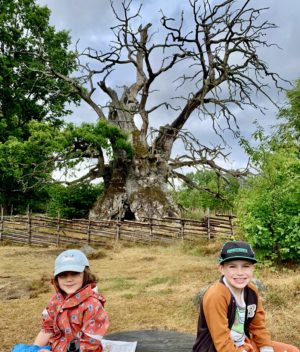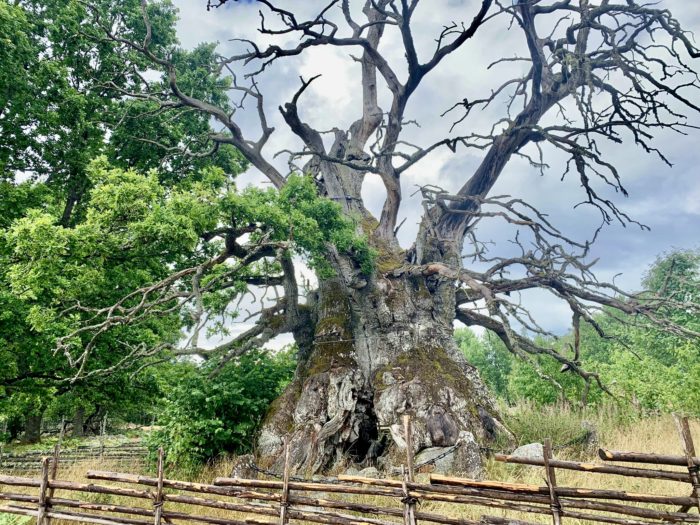Veteran trees and an ancient swedish oak

Veteran trees may be defined by a number of features:
- age
- size;
- condition;
- history;
- position.
Neither age nor size in themselves define veteran status. These features have to be viewed in relation to typical values for each tree species. Thus, a one hundred year old birch or willow might be ‘deemed’ a veteran but a one hundred year old oak or yew would be a youngster.
To be termed a veteran, a tree should show some of the following features
- the trunk should be large (for the species)
- decay holes in parts of the trunk
- the trunk may show signs of damage and/or bark loss
- dead wood in the canopy
- fungal fruiting bodies often present (from heart rot fungi)
- epiphytes, such as mosses and lichens are present
- the tree supports a rich variety of different species
- the shape or position of the tree is of interest
- the tree may have cultural or historical interest, some were used as gallows!
Some veterans achieve their status through the management of the tree, such as pollarding or coppicing. There are thousands of ancient trees in the UK and the Ancient Tree Inventory not only offers a way of finding ancient trees across the country but also you can add details of trees).
Veteran trees can be found in many countries, though the may go under different names. In Australia, veteran or ancient trees are often connected with the social, cultural, and legal practices of the aboriginal peoples. In Italy, an Albero Monumentale (‘a monumental tree’) is defined under National Law [number 10, 14th January 2013].
In Sweden, the oldest oak (Quercus robur) is the Rumskulla Oak , also known as the Kvill Oak. It is found in Kalmar County, Småland. The name Rumskulla derives from its older form Romfarakulla ( = Rome + travel + hill); the area was a resting place for pilgrims that to made the journey to Rome.

It is one of the largest trees in Scandinavia, being some 14 metres (46 feet) high and with a trunk circumference of 13 metres (43 feet). Its girth is still increasing. In the severe winter of 1708-09, the crown was was damaged and much lost. The tree is over a thousand years old and was first described in 1772. The tree is now supported by iron bands and wire. Like many veterans, its centre is hollowed out and it is covered with mosses. There are many holes, cracks and crevices. The Rumskulla Oak is registered as a national natural object of interest, with the Swedish Heritage Board.
Thanks to Fredrika for the photos.
Comments are closed for this post.
